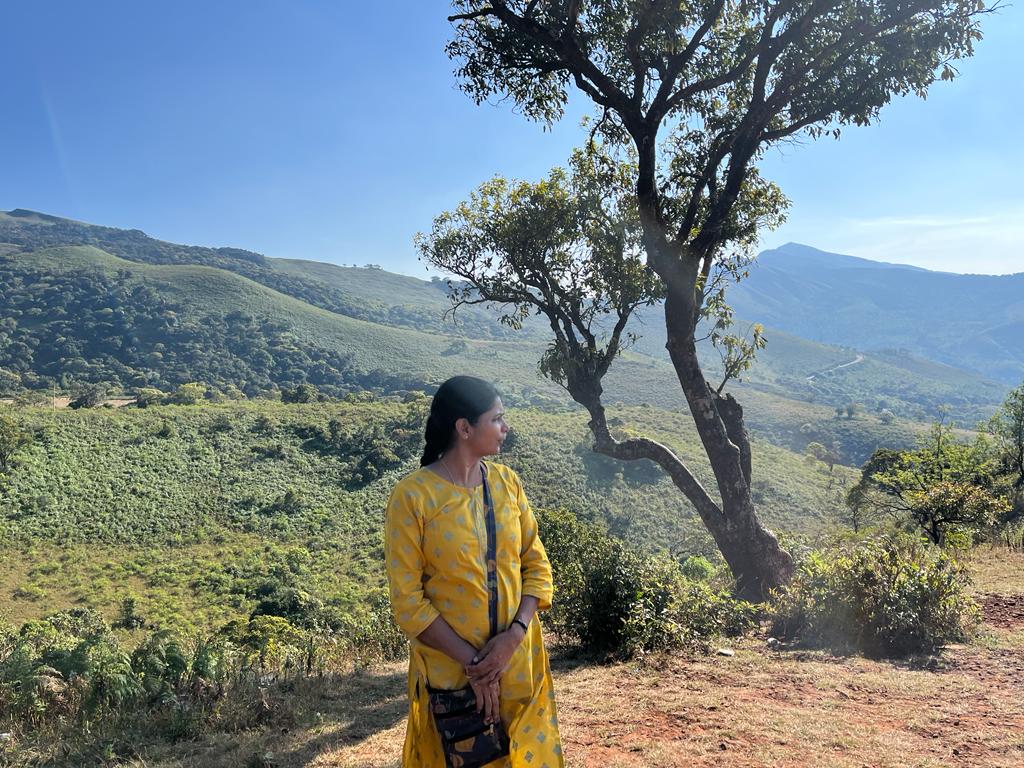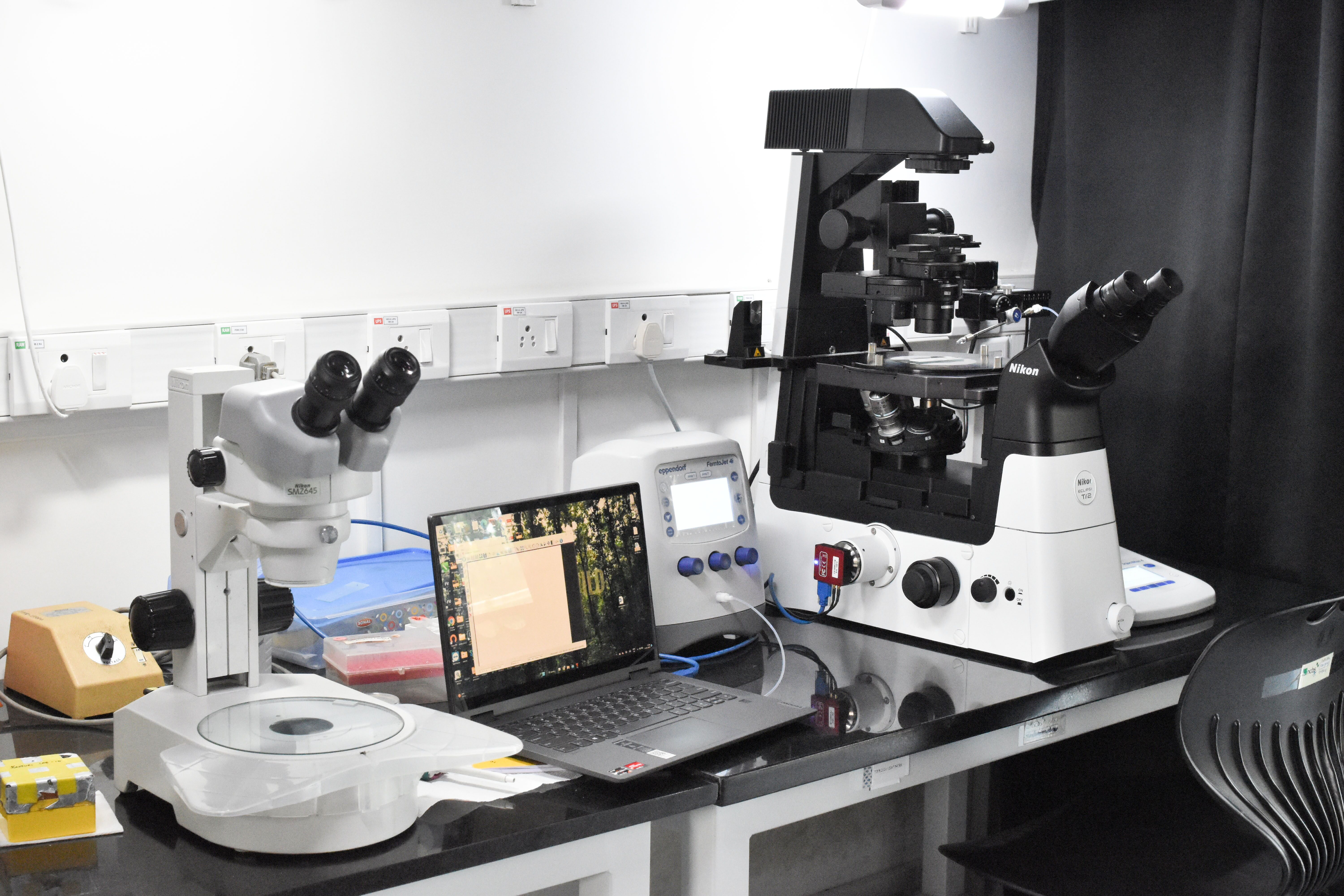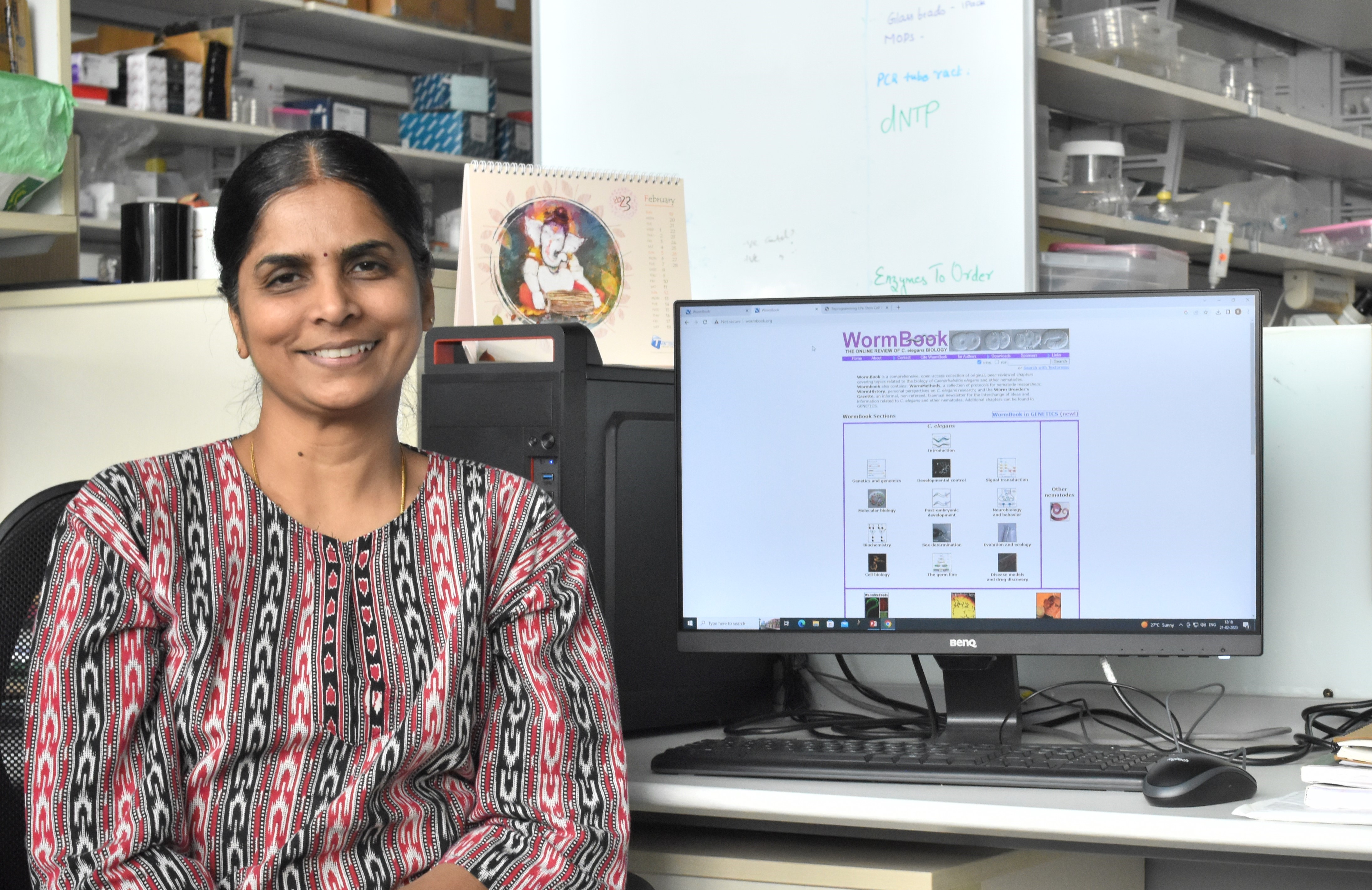Caenorhabditis elegans are tiny free-living nematodes that live in soil. A large number of scientists have taken fancy to these worms as model organisms owing to their simple genome, tiny size, ease of growing and transparent body. The community of worm biologists and fly biologists are always at war to prove which organism is the best model organism for addressing the questions of life, death and everything in between (Hint: It is - flies).
We have a brand-new C. elegans facility on campus which is headed by Ms Selvanayaki. Recently, I got to chat with her about this facility.
Deepti
Hello Selva, could you briefly tell me what your facility does?
Selva
C. elegans are one-millimetre-sized tiny transparent worms highly amenable to genetic manipulations. Our facility ensures that the researchers on campus have everything they need to be able to do C. elegans research. We provide media plates, worm picks, and workstations to do C. elegans work. We offer services in germline microinjection to generate transgenic strains and CRISPR-Cas9 based mutant lines. In addition, we maintain worms in growing and frozen conditions. We also train new users in regular C. elegans work. We provide access to stereo microscopes and fluorescent microscopes for users to study worms.
Deepti
Who are your current users? If somebody wants to use the facility, how should they go about it?
Selva
Currently, students from Dr. Abhishek’s Lab and Dr. Tapomoy’s Lab are using the facility. If someone wishes to use the facility, they should write an email to me. After a discussion and knowing their specific requirement, we can train them or provide them with what they require. If they require specific C. elegans strains, we can source it for them or generate them here in our facility.
Training Users in microinjection
Deepti
Do you also provide transgenic generation services for external users?
Selva
We just started about a year ago and are currently catering only to internal users. But in the coming year, we are opening our services to external users as well. There are 27 research groups that use C. elegans as a model organism in India already. Considering how easy it is to use worms for research, we hope that there will be a lot of interest in our services.
Deepti
Certainly! As you said, the worm facility is comparatively new. Could you list out some of the achievements of the facility since its inception?
Selva
Sure. Since we started, we have already trained six people in microinjection. We have also generated seven CRISPR-based Knock in lines, and there are many more in the pipeline. We have generated 35 transgenics and frozen 35 stocks.
Deepti
Amazing. This looks like a highly specialised activity. Could you briefly explain how these microinjections are done? I am curious to know at what stage do you perform micro-injections in worms to ensure that the germlines are transformed efficiently. And then how are these worms stored and transported?
Selva
C. elegans are hermaphrodites. Microinjections are done in syncytial gonads at a specific development point to ensure that the injected DNA gets inside the nuclei of the oocytes and then is inherited eventually in the fertilised eggs. Since they are hermaphrodites, the fertilization is internal. The screening is done in the progeny. Each worm produces 2-3 hundred progeny. Screening is through visual markers usually. Since these are transparent, screening through fluorescence markers is also comparatively easy to perform. Once the transgenic worms are generated, we like to store a copy of the transgenic line in liquid nitrogen. They can survive at exceedingly low temperatures for years and then can be thawed back to life when needed. For long-term storage, they can be stored in Liquid Nitrogen and -80°C. For temporary storage, we can keep and maintain them at 15°-25°C. We can transport them in vials kept in dry ice, or also we can transport them as plates. Their lifespan is around 20 days at 20°C, and their lifecycle from egg to egg-laying adult is about 3 days.
Transgenic fluorescent worms
Deepti
What led you to pursue this field?
Selva
Actually, I joined Dr. Sandhya Kaushika’s lab as a lab manager. While students in her lab worked with worms, I also got fascinated by them and asked Sandhya if I could also learn some worm work. I learned basic handling of the worms and started helping students. After a few years of doing so, I also learned microinjections, which was amazing. After Sandhya moved to Mumbai, I was still maintaining some of the worms here, and then this opportunity came in after Dr. Abhishek Bhattacharya joined the institute. Since then, we started a worm facility. Now, I train new users in raising the worms and microinjections.
Deepti
Nice. In addition to the C. elegans work, what are your other interests?
Selva
I like listening to music, traveling and playing badminton. I mostly listen to devotional music to calm my mind. I also play badminton as a hobby.

Selva likes travelling! This picture is from her trip to Chikkamagaluru.
Deepti
Great. How do you see the future of C. elegans facility?
Selva
I believe that the usage of our facility will increase in future. We have all the capabilities that we have built over the past year to efficiently generate transgenics and mutants in the worms. We are also open to conducting workshops and training for whoever is interested. Perhaps this interview will make people aware of our existence and bring in users!

Micro injection setup
Check out how the C. elegans facility aids research at one of the labs in NCBS: https://www.youtube.com/watch?v=n1--mFDvch8&list=PL42P6prB3Bu8IAwCvAUAbY...










0 Comments